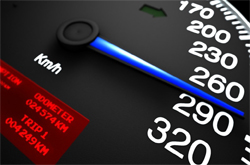This topic is an “eat your vegetables” one.
Maybe not as fun as how to mix flangers and phasers to create alien noises, but I feel it’s an important topic for any professional or aspiring professional.
At some point in your career you’ll be expected to mix a record very fast. In all likelihood this will in fact become somewhat of a common occurrence.
So here are some tips to help you get good results fast.
Incidentally, I’ve found that the better I’ve become at mixing quickly, the better I’ve become at mixing in general.
1) Know your tools
People tend to get a little gear crazy. Having options and the right tools is important, but knowing how to use them is more important. It’s important to really learn the character and capabilities of every piece of hardware and software you use.
Having this relationship with your equipment allows you to access what you are trying to do without having to experiment or guess.
2) Take time to organize
In an effort to be quick, we may short change things like labeling audio channels or aux sends. In reality, spending a little extra time up front to make sure everything is color coordinated, labeled, and in an order and format that is easy for you to navigate makes the actual mix process much faster.
So even if you’re under the gun, take a little extra time upfront and save yourself time and frustration down the road.
3) Commit early
If you’re using hardware inserts, CPU heavy plugins, or just things that glitch or could change easily — reprint early on. If you need to tweak things down the road, you can always pop another EQ or compressor on there. Committing early keeps your head clear and keeps you moving forward. It also frees up your hardware and CPU.
I also like to do basic automation early on. If something is obvious, just give it a quick fader move.
4) Listen to the rough mix with a notepad ready
The basic trading of lead instruments, places for delay throws, the elements that are important and where — these ideas should pop out pretty early on. If you listen to the rough mix and take notes on these things, when it comes time to mix you won’t need to constantly reference the rough mix in order to get your sense of direction.
5) Tweak and move. Find your “anchors” and your “leads”
Set up your reverb and delay throws, and your aux routing, then get to moving. Generally there are rhythmic “anchors” in a song: drums, bass, whatever is pinning the groove down. Throw that up first. Do basic EQ or compression if necessary to get that element sounding good on its own.
Start filling in the rest of the rhythmic elements weighing them against your anchor(s). If you keep the word “groove” as your focus, you will put your rhythm section together in no time.
Then do your other instrumentation. Keep doing little tweaks as you go — nothing major unless it really really needs it. For lead elements, like vocals, guitar solos, whatever, do those last.
The tendency is for the last elements to come in the loudest — so if you put your leads in early, you might end up with an organ pad or string section up too loud. Which means you’ll then have to re-balance, so bring those leads in last. If you’ve left enough headroom, it shouldn’t be an issue to get them to sit just right.
Now, if you have more time to mix, you may want to bring in your lead first and build everything around it. But for something quick I find bringing the leads in last moves faster.
This one is more about personal process — works for me — might be different for you.
Matthew Weiss is the head engineer for Studio E, located in Philadelphia. Recent credits include Ronnie Spector, Uri Caine, Royce Da 5’9” and Philadelphia Slick.
Be sure to visit the Pro Audio Files for more great recording content. To comment or ask questions about this article go here.



















